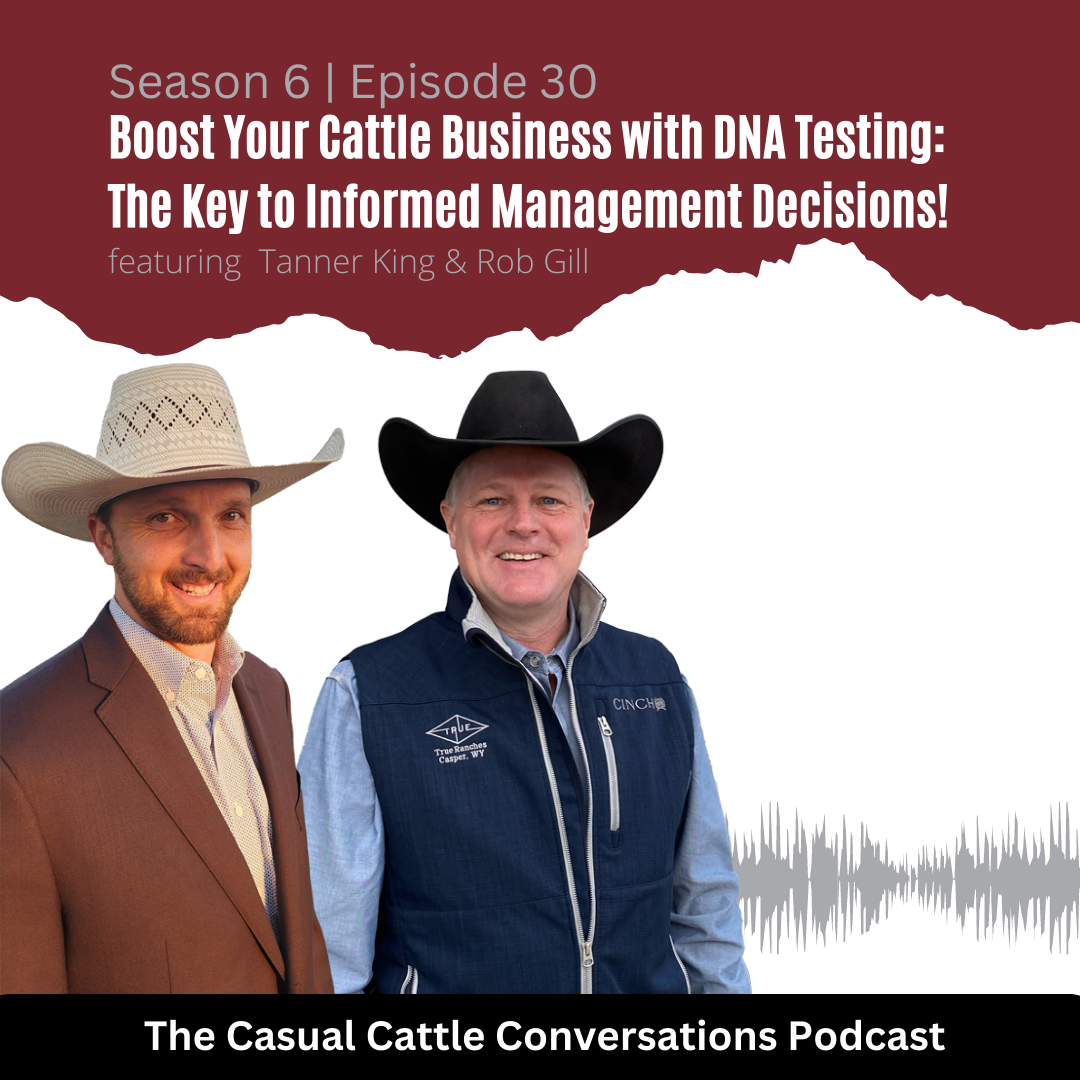Boost Your Cattle Business with DNA Testing: The Key to Informed Management Decisions

Question of the Week: How do you make decisions?
How are you making decisions on your cattle operation? Are you using any data or acting off of emotion? Do you keep complete records and look back on them or try to pull information from your memory?
I’d encourage you to think about the biggest decisions that impact your bottom line and what information you could collect to help you make more informed decisions in the coming years.
Using data and precision technology is the new norm in many segments of the agriculture industry, so why does it feel farther behind in the beef industry? Neogen is changing that narrative with the Igenity Feeder DNA test. Tanner King, feedlot business manager for Neogen, and Rob Gill, superintendent at True Ranches, share their experiences using the Igenity Feeder DNA test and how they see it impacting the beef industry in this podcast episode.
What is Igenity Feeder?
Igenity Feeder is a DNA test that is used to separate cattle based on carcass merit.
“We know that carcass traits are the most heritable and they are also the easiest to collect data on to build models,” said King.
The results from the DNA test predict the animal’s ability to grow and grade as well as how many days it will be on feed. These results are shown as two indexes: Igenity Terminal Index (ITI) and Days on Feed (DOF). The process for using Igenity Feeder is a simple one. A tissue sample is taken from the ear and sent to the lab. Once the lab is done processing the samples, cattle producers can log into their accounts, view the results and start making data-based decisions with confidence.
“There are a lot of different ways to use this technology. If you are a cow-calf producer who is retaining ownership, it will let you know which ones to feed and which ones not to feed. If you are a stocker, backgrounder or feeder; it can help you know which calves to purchase and how to best manage these calves,” said King.
How are Ranchers Using it Today?
True Ranchesis a fully integrated operation today as they span from cow-calf production to feeding and harvesting their own cattle. As superintendent, Rob Gill was introduced to Igenity Feeder a few years ago. Traditionally, they had just been sorting on weight but the ability to predict days on feed of their calves sparked interest in Gill.
“In a feedlot, you are typically going to overfeed 10-20% of calves and underfeed 10-20% of the calves. These predictions allow you to make important and informed economic decisions early on,” said Gill.
True Ranches ran a pilot project with Neogen to see how Igenity Feeder could impact the operation. They pulled samples on approximately 700 steers around weaning and sorted them in 3 different pens in the feedyard. These three pens split the 25% of calves who would finish early, the 25% that would need more feed and the remaining 50% that were somewhere in the middle.
“We were able to take this information and maximize the revenue per calf by feeding them to fit Gill’s grid marketing model. We looked at which grids they would sell on and made management decisions off that. Even with there being some bad winter storms in Gill’s area, we were still 90% accurate on the weights of the calves when they finished,” said King.
The Future of Precision Technology in the Beef Industry
What does all this mean for the beef industry? It means we can be more proactive and use current data to make decisions today instead of old data to make decisions today. It also allows cattle feeders to save money on inputs.
“Our corn went from $3 to $9 along with the price of other inputs. Being able to predict which cattle would be profitable to feed and which ones not to feed has become critical. I think the producer will soon learn that this feeder test will quickly pay for itself,” said Gill.
DNA testing feeder calves isn’t solely beneficial to the one feeding the animals. It will also open up the doors for cattle producers to sell their top-performing calves in the correct market and receive the premiums they deserve.
“With this test, we can help people determine when, where and how to sell their calves. We know exactly which grids and markets will be the most profitable for each group of calves,” said King.
Data is knowledge and knowledge is power. Having this information on your calves is a way for you to leverage their worth and build relationships with the right buyers.
Precision technology such as this is going to change the way we manage ranches and feedlots forever. It all boils down to making the most informed economic decisions as possible and reducing the amount of guessing that goes into cattle production. Not only is this a tool for marketing cattle, it’s also a risk management strategy that can be used in multiple segments of the industry. How will you start making more data-driven decisions on your operation this year?
Listen to the full conversation here.








